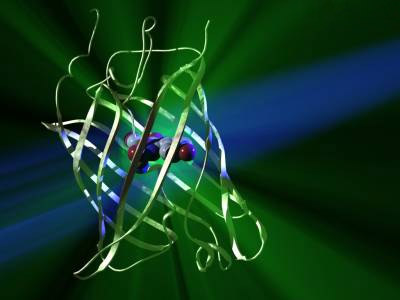 The largest known proteins are the titins, found in muscle, which are composed from almost 27,000 amino acids.
Titin is a giant protein that functions as a molecular spring which is responsible for the passive elasticity of muscle.
The largest known proteins are the titins, found in muscle, which are composed from almost 27,000 amino acids.
Titin is a giant protein that functions as a molecular spring which is responsible for the passive elasticity of muscle.
LProteins in the diet are necessary for life. Dietary proteins are broken down into their component amino acids when food is digested.
Cells can then use the components to build new proteins. Humans are able to synthesize all, but eight of the twenty common amino acids. These eight amino acids, called essential amino acids, must be consumed in foods. Like dietary carbohydrates and lipids, dietary proteins can also be broken down to provide cells with energy.
Proteins are biochemical compounds consisting of one or more polypeptides typically folded into a globular or fibrous form, facilitating a biological function. A polypeptide is a single linear polymer chain of amino acids bonded together by peptide bonds between the carboxyl and amino groups of adjacent amino acid residues. The sequence of amino acids in a protein is defined by the sequence of a gene, which is encoded in the genetic code. Proteins can also work together to achieve a particular function, and they often associate to form stable protein complexes.
Proteins are about 50% of the dry weight of most cells, and are the most structurally complex macromolecules known. Each type of protein has its own unique structure and function. They are instrumental in almost everything organisms do. They can be used for a variety of functions from cellular support to cellular locomotion. Some proteins speed up chemical reactions, while others play a role in structural support, storage, transport, cellular communications, movement, and defense against foreign substances.